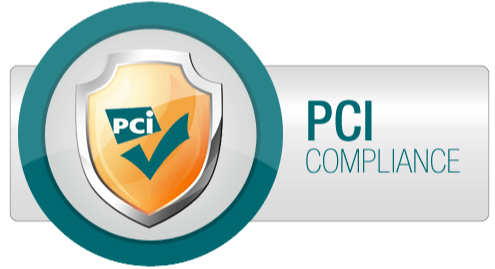It’s September and school is back in session! For educators, it is that magical time of year when anything seems possible. You’re refreshed and ready to make this year the best ever. You want all your students to have a successful year! And you know that a key component to any educational program is parental engagement, especially for children with special needs. But with the demands of today’s parents, getting appropriate parental engagement can be a challenge, and this is compounded for the parents of children with special needs.
Before we discuss ways to encourage parental engagement, let’s first look at what we mean by parental engagement. The Centers for Disease Control (CDC) defines parental engagement in schools as parents and school staff working together to support and improve the learning, development, and health of children and adolescents. Schools and parents have the responsibility for educating our children (retrieved from cdc.gov/healthyyouth/protective/parent_engagement?q=parental+engagement).
There are many benefits to parental engagement across the board, but particularly for students with special needs including:
- Increased parental involvement and collaboration in the development of their child’s Individualized Educational Program (IEP)
- Greater confidence and ability on the part of the parent to educate their own child
- Better understanding on the part of the educator as to the special needs of each student
- Higher student success due to the generalization of skills and consistency between home and school
Unfortunately, barriers to parental engagement do exist. Some of these barriers are due to: cultural or language differences, special education law that can be difficult to understand, lack of time, past negative experiences, and lack of training on the part of the educator to effectively facilitate engagement (retrieved from hfrp.org/hfrp/search?q=parental+engagement).
What can you do to eliminate the barriers and make it easier for parents to engage? Here are three keys to increasing parental engagement.
Treat Parents as Partners
Do you respect the role the parent has in the education of their child with special needs? Do you actively invite parents to meet ahead of the IEP to set goals together? Do you accommodate their schedules and consider their cultural contributions or differences? Do you think about how to improve parent participation in the decision-making process? These are just a few questions that can help you think about parents as partners in their child’s education.
Here are a few ways to help your parents partner with you:
- Consider your message before the IEP happens. Did you invite them to listen to you and others tell them about their child or did you invite them to participate in the meeting and share their knowledge of their child?
- Wait for the parents outside the meeting room prior to the IEP and walk in together as a team. That will be much less intimidating for the parents than walking into a room full of “experts” sitting and staring.
- Understand that some cultures interact with educators and other school professionals differently. A parent may be agreeing with the proposed goals because they want to be polite and respectful.
- Invite parents to ask questions and give them a platform to suggest goals they have for their child.
- Take time to educate the parents. Explain any special education jargon, provide them with resources, and connect them with other support programs such as translation services, if needed.
- Let the parents know you are genuinely interested in what they have to say.
- Create tool kits that provide parents with activities and resources to extend the learning into the home. The tool kits may also include tips and strategies for teaching their child or websites they can go to for additional activities or information.
- Work with the parents to set realistic parent participation goals. They are the parent, not the teacher. Remember, the goal is quality, not quantity of involvement.
Create an Effective Communication System
The goal of an effective communication system is to bridge the gap between home and school by providing a way to share concerns, successes, behavioral challenges, stressors, and changes.
There are many ways to implement such a system. Choose the method that is simple and works best for you and the parent. The easier the system, the more it will be used. And again, remember, quality of communication is more important than the quantity of communication.
Here are some suggestions:
- Connect at the beginning of the year and ask parents what information they want. Perhaps you can come up with a checklist together, that’s easy to use and sends home meaningful information. The same goes the other way too. For example, create a checklist for things you want to know from home such as changes in sleep patterns, nutrition, or family relations.
- Use a composition notebook that goes back and forth from home to school in the child’s backpack. You can report IEP progress or write anecdotes about the child’s day, etc. and the parent can write back questions or concerns. This can happen on a daily basis.
- Many teachers use texts or email to communicate (check with the parents first for the most preferred method). They may find this less intrusive and intimidating than a phone call, and allows the parents to think and respond on their schedule. If a phone call is necessary, perhaps send a text to say, “Can we set up a time to chat on the phone?” This allows the parent to choose a time that works for them.
- Schedule home visits, if appropriate. This may help parents who lack transportation or have other circumstances that keep them from coming to school.
Create a Welcoming Climate
Welcome your parents into your classroom in many ways and for many purposes. The more you know your parents, the easier it is to work with them as partners. Inviting parents into your classroom also provides an opportunity for family networking, bringing families together with other parents to share resources, empathy, and support.
Some ways to help parents to feel welcome in the classroom include:
- Volunteering for special events and holiday parties, field trips, family and friends’ breakfasts, guest speakers, photo shares, parent presentations, etc.
- Providing ways for parents to volunteer without having to come into the classroom, such as organizing and preparing materials that require cutting, collating, or stapling.
- Volunteering to read to or with students or provide one-on-one assistance to students in the library or media center.
- Inviting parents to attend presentations or view displays by the students or to school assemblies when appropriate.
So as you set up for another successful school year, I encourage you to think about your parents as partners. You are the educator! You’re good at it! But reaching out to your students’ parents as partners will help you help your students and make your job a little bit easier!












